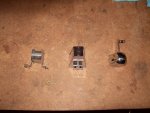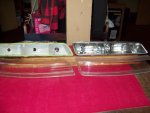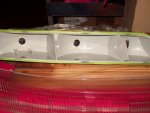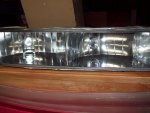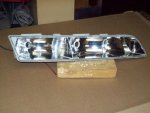ranchodenieve
New member
I was trying to adjust my headlight aim tonight since they appeared to be aimed way too low. The low beams were like no lights at all and the high beams lit up the road like low beams. I was using the classic technique of looking for the top of the beam at 25 feet, but the low beams were too diffuse to show a top of the beam at any setting. Meanwhile the brights were blastingly bright with the 6000 lumen LEDs that I installed in both sets of lights. The high beams were set perfect and work really well, but the lows are still icky. Upon inspection of the lit reflectors, I discovered why. The high beams have a smooth reflective surface inside that properly focuses the beam. The low beams do not. They seem to have lines inside that diffuse rather than focus the beam. As a consequence they have a very dim output. Both do have the shiny surface intact.
Is it possible to take the lamps apart to install a proper unbroken shiny surface into the low beams. It does not look like it from the eBay images of these lights. Are there other years that don't have this issue that I can install? I'd prefer to avoid HIDs if possible since the LEDs do have more light output and are easier to deal with. Or do I just need to install a set of external lights like a rally car. I'm ok with that if that's the easiest solution to this problem.
Has anyone cut open the low beams and put a set of projectors into them? This seems like a lot of work to get it right, but preserves the stock look.
Bill W
Is it possible to take the lamps apart to install a proper unbroken shiny surface into the low beams. It does not look like it from the eBay images of these lights. Are there other years that don't have this issue that I can install? I'd prefer to avoid HIDs if possible since the LEDs do have more light output and are easier to deal with. Or do I just need to install a set of external lights like a rally car. I'm ok with that if that's the easiest solution to this problem.
Has anyone cut open the low beams and put a set of projectors into them? This seems like a lot of work to get it right, but preserves the stock look.
Bill W

